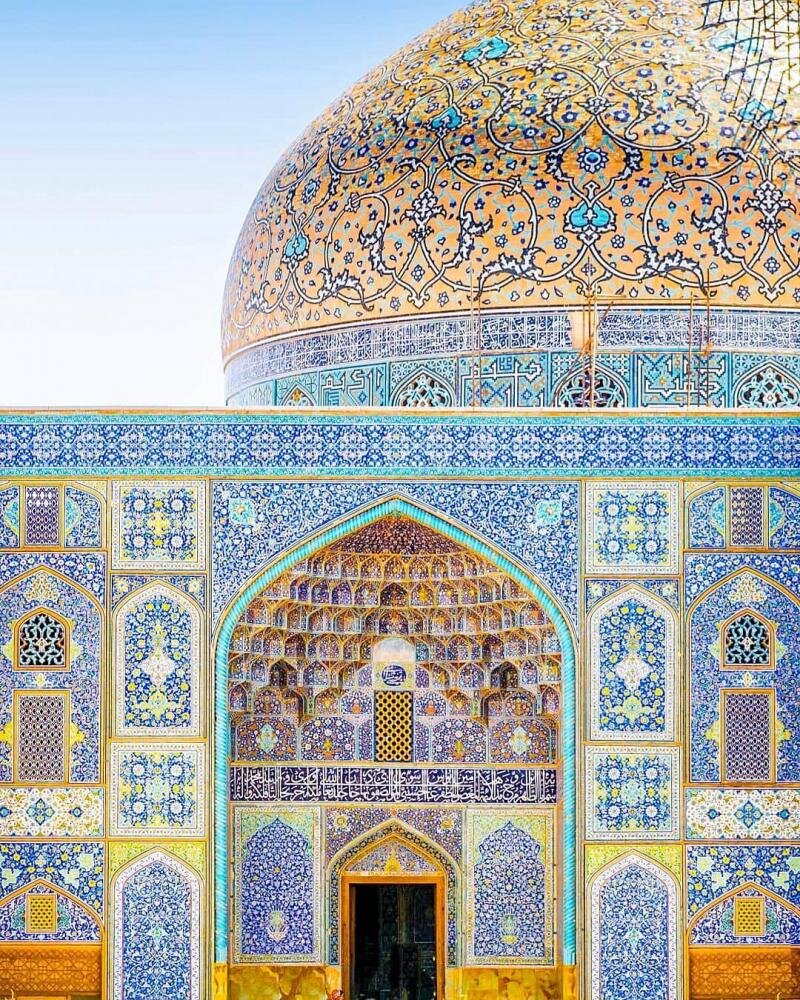Tricky waterproof repairs cast doubt over fate of Iranian architecture masterpiece

TEHRAN – Many visitors to the 17th-centyry Sheikh Lotfollah Mosque, a top masterpiece of Iranian architecture that stands tall in Isfahan, witnessed last month that its picturesque creamy dome was emerged split-face from a snowfall.
Since then, the event has severely cast doubt over the fate of the mosque, which punctuates the middle of the two-story arcades that are encircling the enormous Imam Square, a hectic UNESCO World Heritage site in central Iran.
So that social media rumors have been around as some take the blame on “flawed” restoration work that has partly carried out on the dome of the mosque, this time by the use of [modern] waterproof materials.
Media reports suggested then that repair work at the dome had damaged its integrity as pictures taken on a snowy day in Isfahan showed all parts of the dome but one covered in snow, Press TV reported.
“Restoration and preservation experts rushed to social media to criticize local authorities for not caring enough for the architectural masterpiece which was built 400 years ago during the Safavid Empire,” the report said.
Authorities at the Ministry of Cultural Heritage, Tourism and Handicrafts initially dismissed the pictures as tampered with but later admitted that there should have been a fault with the restoration. They, however, are pursuing the best way using the expertise of top traditional restorers and academic achievements in order to salvage the monument without any damage to its glory.
Experts said the repair workers could have used hydrated construction materials that contained polymer substances. Others said cracks on the dome that have been caused by previous restoration work could be to blame.
The story of hydrophobicity on the tiled portion of the dome has been repeated from person to person over the past three weeks that now it has turned to larger fear, casting doubt over the fate of the majestic mosque. Some even have warned over the danger of the whole collapse!
Isfahan province’s tourism chief Fereydoun announced last June that some two-eighths of delicately floral tiles, which for centuries adorned the creamy dome of Sheikh Lotfollah Mosque, had been restored and are ready to be reinstalled.
“This phase of the restoration project entails two-eighths of the dome’s surface (the dome has been divided into eight portions), and its associated glazed tiles have been fully restored and are ready to be reinstalled.”
In comparison to many mosques scattered across the country, Sheikh Lotfollah Mosque appears to be relatively unusual, having neither a minaret nor a courtyard probably because the mosque was never intended for public use, but rather served as a worship place for women. Built between 1603 and 1619 during the reign of Shah Abbas I, the mosque was dedicated to the ruler’s father-in-law, Sheikh Lotfollah, a revered Lebanese scholar of Islam who was invited to Isfahan to oversee the king’s mosque (now the Imam Mosque).
The exterior panels boasts collections of arabesques and floral designs that have become a signature motif of the masterpiece. The portal itself contains some stalactite-type stone carving used to decorate doorways and window recesses with rich concentrations of blue and yellow motifs. Inside the sanctuary, there are thousands of mosaics that adorn the walls and its extraordinarily gorgeous ceiling that features a series of shrinking, yellow motifs, itself a masterpiece of design. Photography is allowed but using a flash is not.
The huge Imam Square, best known as Naghsh-e Jahan Sq. (literary meaning “Image of the World”), is one of the largest in the world (500m by 160m), and a majestic example of town planning of the time.
AFM/MG
Leave a Comment